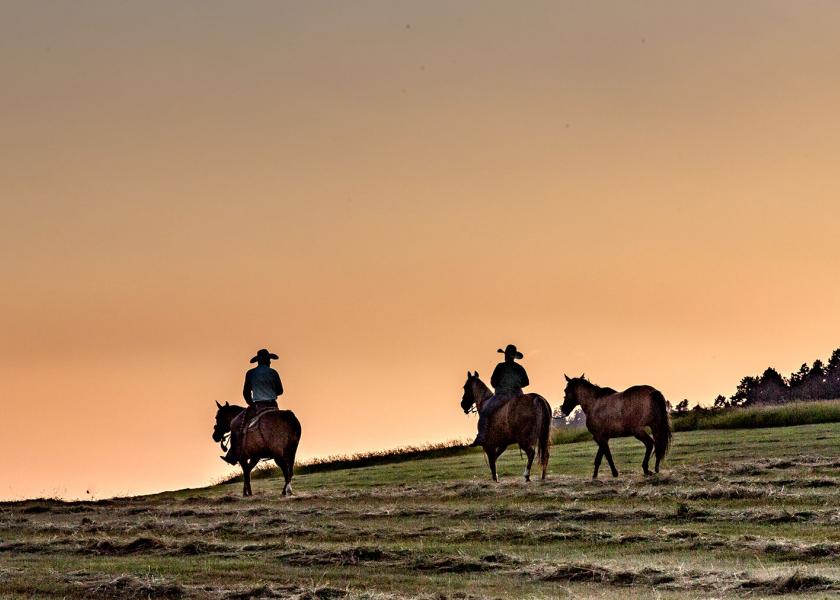USDA Invests $633 Million in Climate-Smart and Resilient Infrastructure

United States Department of Agriculture (USDA) Secretary Tom Vilsack today announced the Department is investing $633 million to reduce the impacts of climate change (PDF, 394 KB) on rural communities. With the enactment of the Bipartisan Infrastructure Law and as part of the broader Build Back Better agenda, the Biden-Harris Administration has made investing in rural communities, creating good-paying jobs and combatting the climate crisis top priorities.
“Rural America is on the front lines of climate change, and our communities deserve investments that will strengthen all of our resilience,” Vilsack said. “President Biden has created a roadmap for how we can tackle the climate crisis and expand access to renewable energy infrastructure, all while creating good-paying jobs and saving people money on their energy costs. With the Build Back Better agenda, USDA will be able to fund more and more critical projects like those announced today in the coming months and years.”
Background:
Vilsack highlighted 791 investments that USDA is making in five programs specifically designed to help people and businesses in rural areas. These programs include Community Facilities Disaster Grants, Electric Loan Program, Rural Energy for America Program, Rural Energy Savings Program, and the Higher Blends Infrastructure Incentive Program.
The funding will help people in all 50 states and Puerto Rico. It reflects the many ways USDA Rural Development helps rural residents, businesses and communities address economic development, infrastructure and social service needs.
These investments will help build and improve rural electric infrastructure and connect residents to affordable and dependable power. They will help agricultural producers and rural small businesses purchase and install renewable energy systems and make energy efficiency improvements. They will also help transportation fueling and biodiesel distribution facilities offer higher ethanol and biodiesel blends to customers by sharing the costs to install fuel pumps, equipment and infrastructure.
Secretary Vilsack made the announcement from Saubel’s Markets in Shrewsbury, Pennsylvania, which will receive a $103,413 USDA Rural Energy for America Program (REAP) grant. With this funding, the small business will install solar panels on the roof of their family-owned grocery store that has been in business since the 1960s. This project is expected to save $30,852 per year and will replace 395,539 kilowatt hours (kWh) per year, which is enough energy to power 36 homes annually. As part of today’s announcement, Pennsylvania will receive more than $1 million for 22 projects across the state.
Other examples of projects in this announcement from around the country include:
- Wauchula Solar LLC in Hardee County, Fla., is receiving a $35,053 Rural Energy for America Program grant to install a 237.3 kilowatt solar array. The system will be placed on top of an abandoned building that has been converted into a hydroponic lettuce farm. The system will produce 388,235 kilowatt hours annually, which is enough energy to power 35 homes.
- Dressor Plains Solar will use an $85.7 million Electric Infrastructure loan to construct a 99 megawatt solar photovoltaic farm on 609 acres in Fayette County, Ill. Dressor Plains has a 27-year power purchase agreement with Wabash Valley Power Association, Inc. (Wabash) to sell and deliver the electricity produced. Wabash provides wholesale power to 23 distribution cooperatives in Illinois, Indiana and Missouri.
Under the Biden-Harris Administration, Rural Development provides loans and grants to help expand economic opportunities, create jobs and improve the quality of life for millions of Americans in rural areas. This assistance supports infrastructure improvements; business development; housing; community facilities such as schools, public safety and health care; and high-speed internet access in rural, Tribal and high-poverty areas. For more information, visit www.rd.usda.gov. If you’d like to subscribe to USDA Rural Development updates, visit our GovDelivery subscriber page.
USDA touches the lives of all Americans each day in so many positive ways. Under the Biden-Harris Administration, USDA is transforming America’s food system with a greater focus on more resilient local and regional food production, ensuring access to healthy and nutritious food in all communities, building new markets and streams of income for farmers and producers using climate, smart food and forestry practices, making historic investments in infrastructure and clean energy capabilities in rural America, and committing to equity across the Department by removing systemic barriers and building a workforce more representative of America. To learn more, visit www.usda.gov.







